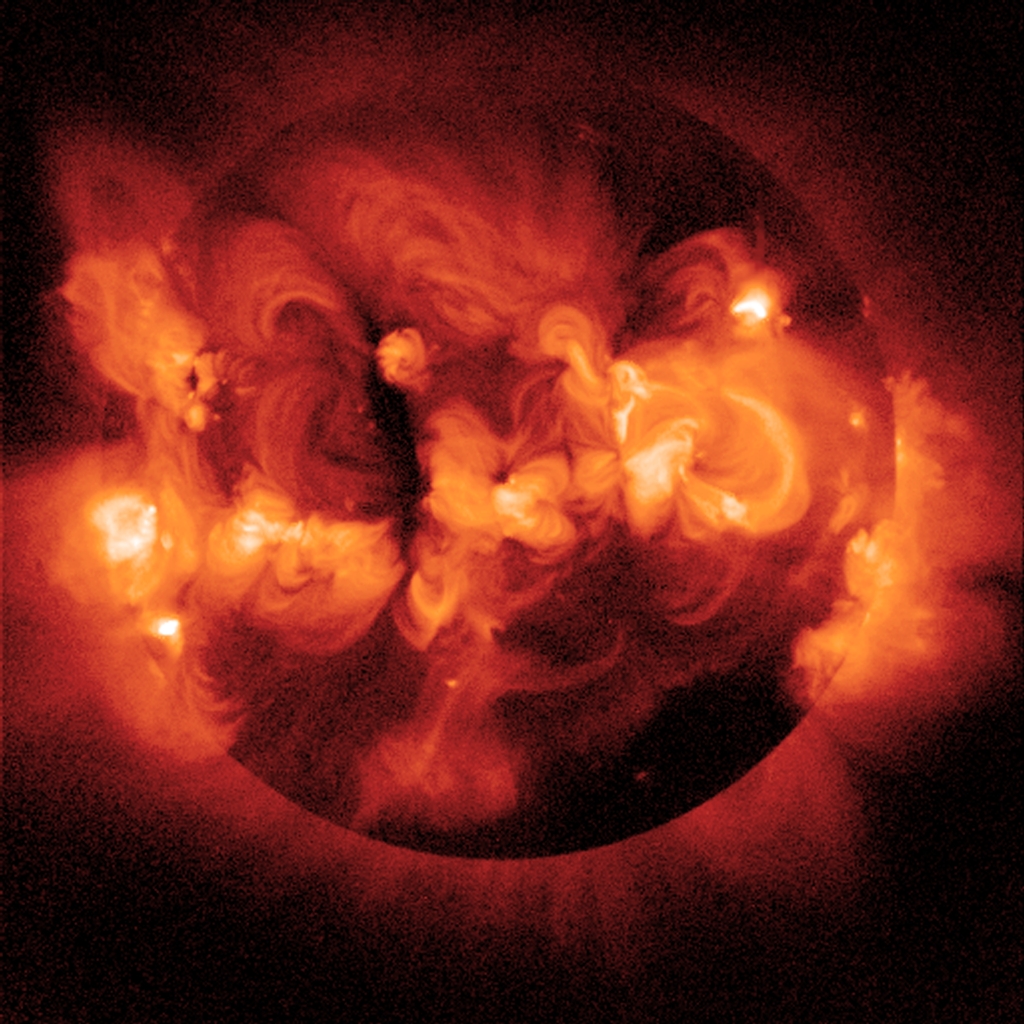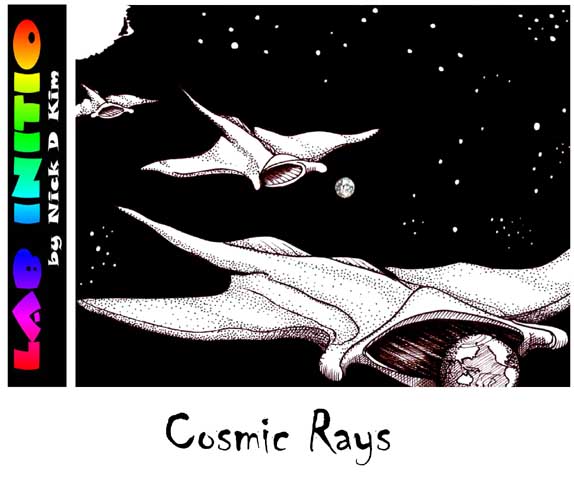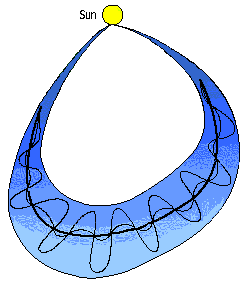|
Welcome to Brian Lundberg's
Solar Physics Webpage!
|
 What
you are seeing here is our Sun near a maximum in the 22-year Solar Cycle.
Our sun is a very dynamic star, as you can see from the picture.
The loops and swirls are regions where the Sun's magnetic field has broken
through the surface, giving rise to very intricate and beautiful plasma
dynamics. If you continue reading below, you will see some of the
work I have done during the summer of 2002 at Montana State University,
modeling one of the physical after-effects of the violent solar eruptions
seen to the left.
What
you are seeing here is our Sun near a maximum in the 22-year Solar Cycle.
Our sun is a very dynamic star, as you can see from the picture.
The loops and swirls are regions where the Sun's magnetic field has broken
through the surface, giving rise to very intricate and beautiful plasma
dynamics. If you continue reading below, you will see some of the
work I have done during the summer of 2002 at Montana State University,
modeling one of the physical after-effects of the violent solar eruptions
seen to the left.
Below is My Solar Physics Montana State University
REU 2002 Presentation. Enjoy!
***Introduction***

(Note the cartoon prominence in the upper left-hand corner!)
Hi there! My name is Brian
Lundberg, and I am currently a Solar
Physics REU student for the year 2002 at Montana State University.
During the academic year, I attend the University
of Arizona in Tucson, AZ, majoring in Physics and Astronomy, and graduating
in May 2003. I spent this past summer working with Dr.
Bob Leamon, learning how to program in IDL (Interactive Data Language)
and modeling interplanetary magnetic clouds from data collected by the
Wind satellite, with the intent of comparing the various physical parameters
of these clouds to the corresponding parameters of their respective eruptive
events (more below).
These interplanetary magnetic clouds originate on
the surface of the sun, where the Sun's magnetic field and the hot plasma
of the photosphere are intimately connected. Active Regions, the
areas around sunspots that are very magnetically dynamic, are sites of
strong magnetic fields and intricate plasma dynamics. Sometimes,
the plasma in and around an active region will erupt violently in what
is called a Coronal Mass Ejection (CME).
Plasma thrown off the surface of the Sun via these CMEs will drag the
interlacing magnetic field with it. The equations of magnetohydrodynamics
(MHD) predict this. We make the approximation of a 'force-free' plasma,
indicating that the Magnetic Reynold's Number is much greater than unity.
When this is the case, we speak of the magnetic field-lines being 'frozen-in'
to the plasma, meaning that the plasma itself governs most of the dynamics
of the system, i.e. where the plasma goes, so must the magnetic field-lines.
Consequently, the plasma ejected from the surface of the Sun will drag
some of the magnetic field with it, in effect forming a long magnetic flux
tube that sweeps out into interplanetary space. More on this can
be seen in the Mathematics section.
Occasionally, these magnetic clouds can cross the Earth's orbit, producing
disastrous effects for telecommunications, satellites, and spacecraft.
Even the astronaut unlucky enough to be caught space-walking while one
of these events crosses the Earth's orbit could be subjected to deadly
amounts of radiation! However, these potentially dangerous solar
eruptions are also responsible for the bright and beautiful aurorae
that can be seen every once in a while toward the North and South Poles.
These magnetic clouds have many intrinsic characteristics, a few of
which are as follows: they are charactized by an enhanced magnetic field
magnitude that is much higher than the magnetic field of the surrounding
areas. Also, and maybe most inportantly, the latitude of the magnetic
field vector undergoes a smooth rotation through almost 180°. The
characteristic temperature is somewhat lower than surrounding material,
as is the ion number density. These can be good indicators of the
start of a magnetic cloud, since the temperature and number density can
take sharp dives at the start of a magnetic cloud. For an example
of the rotation of the magnetic latitude, see Figure
1. In the figure, you can see how the latitude prior to the start
of the cloud is more or less sporadic and random. However, at the
start of the cloud, the latitude starts to undergo the smooth rotation,
returning to the randomness after the cloud has passed.
The following figure shows (roughly!) the geometry of the 'flux rope'
model of a generic magnetic cloud, :

The solid, heavy black line is the central axis of the cloud, with the
wavy lines representing a cross-section of the magnetic field. Note
how the cloud has a loop-like structure, which originates at the footpoints
of the Active Region at which the CME occurs. These clouds can often
be on the order of 0.25 AU across.
Images from LASCO (Large Angle Spectrometric COronagraph), taken October
8, 1999, showing similar loop structure after the eruption of a CME can
be found here.
In the next section, we will see a little about the mathematics we have
used to model our magnetic clouds.
Introduction
Mathematics
The
Program
Results
Acknowledgements
This Page Last Updated 08/12/2002
e-mail: lundberg@email.arizona.edu
 What
you are seeing here is our Sun near a maximum in the 22-year Solar Cycle.
Our sun is a very dynamic star, as you can see from the picture.
The loops and swirls are regions where the Sun's magnetic field has broken
through the surface, giving rise to very intricate and beautiful plasma
dynamics. If you continue reading below, you will see some of the
work I have done during the summer of 2002 at Montana State University,
modeling one of the physical after-effects of the violent solar eruptions
seen to the left.
What
you are seeing here is our Sun near a maximum in the 22-year Solar Cycle.
Our sun is a very dynamic star, as you can see from the picture.
The loops and swirls are regions where the Sun's magnetic field has broken
through the surface, giving rise to very intricate and beautiful plasma
dynamics. If you continue reading below, you will see some of the
work I have done during the summer of 2002 at Montana State University,
modeling one of the physical after-effects of the violent solar eruptions
seen to the left.

